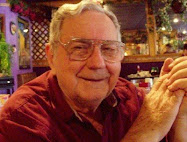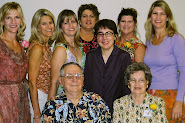 Recently I went to Wal-Mart to get refills for my pen. Glancing over I noticed a small stapler in a blister-pack. I like the small-size stapler, it takes up less space on my cluttered desk and most of my stapling is 2-3-4 sheets of paper. For more pages I use the larger American-made staples. It was a bright orange color that caught my eye. Then I noticed the price, $1.82 plus tax. I thought that might be a mistake, but there were 6 or 8 on the peg at that price. The pack included a box of 1,000 staples. The brand was “Swingline.” I splurged and bought the stapler.
Recently I went to Wal-Mart to get refills for my pen. Glancing over I noticed a small stapler in a blister-pack. I like the small-size stapler, it takes up less space on my cluttered desk and most of my stapling is 2-3-4 sheets of paper. For more pages I use the larger American-made staples. It was a bright orange color that caught my eye. Then I noticed the price, $1.82 plus tax. I thought that might be a mistake, but there were 6 or 8 on the peg at that price. The pack included a box of 1,000 staples. The brand was “Swingline.” I splurged and bought the stapler.The next time I worked at TEAM, I opened the package, which sometimes is a challenge. Sometimes the ladies that I work with bring me their blister packs to open.
The top and bottom were orange and the base was gray. Front to back was 2 ½ inches and height was 2 inches. There were five separate metal pieces plus the spring and the 1,000 staples, two pieces of cardboard printed in colors and the clear plastic container, all for $1.82 and tax.
I visualized the stapler being made from one of my previous cars or trucks. The vehicle might have been taken to the Houston Ship Channel area, crushed and put into a cargo ship which sailed through the Panama Canal and then to China, was loaded on a train and taken to a smelter furnace. The metal was then rolled into large rolls and shipped to the Swingline factory. There it was rolled thinner, punched into its five parts and nickel-plated. The spring was made from a spool of wire, tempered, plated and formed. The plastic may have been made from soybeans raised by my relatives in Nebraska. The cardboard may have been made from the newspapers and cardboard I take to the church recycle bin. The ink may have been made at one of the Channel industries. After assembly the staplers were boxed, put into a large container, placed on a railroad flatcar, taken to the seaport, and put on a container ship going to the West Coast. Here the container was placed on a train going to Bentonville, Arkansas, unloaded and placed in a truck going to Tomball, unloaded and placed on the peg at Wal-Mart, all for $1.82 and tax.
How do they do that?









No comments:
Post a Comment